Sour Fig / Spring / Summer / Autumn / Winter / Edible
Common Names
Sour Fig/Ice Plant
(The name Hottentot Fig is also known, but foragers should be aware that this name has colonial and racist history in South Africa where the plant originated)
Botanical Name
Carpobrotus edulis
Scientific Classification
Kingdom – Plantae
Order –Caryophyllales
Family – Aizoaceae
Physical Characteristics
It has been considered an invasive species since 1999, after introduction as an ornamental and to control soil erosion and sand dune movement. Due to its ability to form dense mats that keep getting denser, it can change soil characteristics over time, threatening the survival of other plants. It is to be found forming dense mats over coastal surfaces like cliffs, as well as man-made walls and dykes, but is of particular concern in dune habitats which can be relatively fragile. Do not plant any in areas where it was previously un-established.
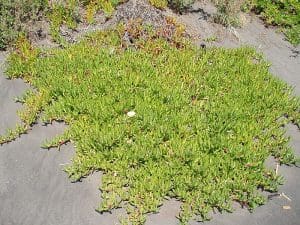
Leaves
This plant is typically found growing in dense mats.The leaves are succulent and triangular, usually growing vertically to a sharp (but not spiky) point. They are usually bright green, but can be tinged with red, especially later in the season.
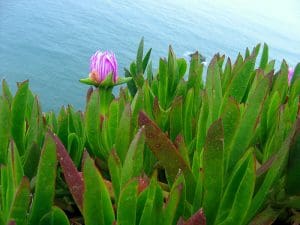
Flowers
The flowers appear daisy-like, and are bright pink with a yellow centre.
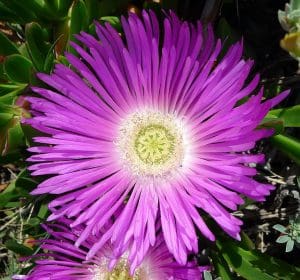
Habitat
While native to South Africa, it has made its home across the world, thriving very well in Mediterranean regions.
Particularly abundant on the coast due to being well suited to high salinity, low water levels and extreme exposure to sunlight.
Known Hazards
None known
Could be Confused with
Check that the leaf cross-section is truly triangular, check the habitat and observe whether the plant has a very dense mat structure, and there is little to confuse Sour Fig with.
Edible Uses
The leaves are succulent and have a slightly tangy, bitter flavour which complements salads and stir-fries well.
They would also lend themselves to foraged sushi and other dishes as a substitute for cucumber, including lacto-fermented pickles.
The fruits are best harvested when they feel very ripe to the touch – and are the source of the name ‘Sour Fig’ – for jams, chutneys, syrups, and fruit drinks.
They can be dried for preservation.
Take care to strain the many seeds out of your final product. Ensure they are ripe; the flesh is very astringent if not properly ripened.
The ripe fruits make a nice forager’s snack if you suck out the inner flesh.
The leaves can be harvested throughout the year, but be aware of where the plant is putting its energy as the taste will change. Before the flowers have started to form is the best time to pick leaves. The flowers can be out in the early spring, with fruits arriving soon after.
Notes on Herbal uses
The fruits and flowers have been used in South Africa for fungal and bacterial infections, particularly of the gut. Some chemicals with antimicrobial activity have been isolated from this plant, such as rutin and hyperoside.
Like Aloe, the leaf juice/gel can be used topically in creams, lotions or directly as a soothing emollient.
Extra notes from the Foragers
This plant can reproduce both with runners and seeds, making it a rather tenacious land-grabber. It has been cultivated on land that is vulnerable to forest fires due to its high water content.
You can find more information about its invasive status here
And background on the racialised colonial history of its name here



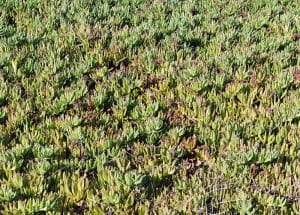
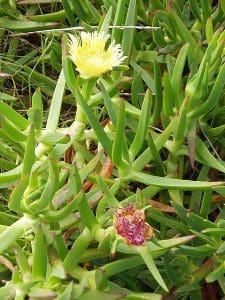
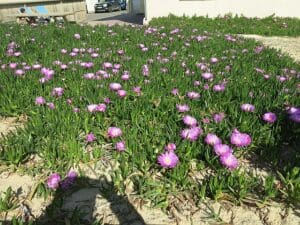



Leave a Reply
You must be logged in to post a comment.